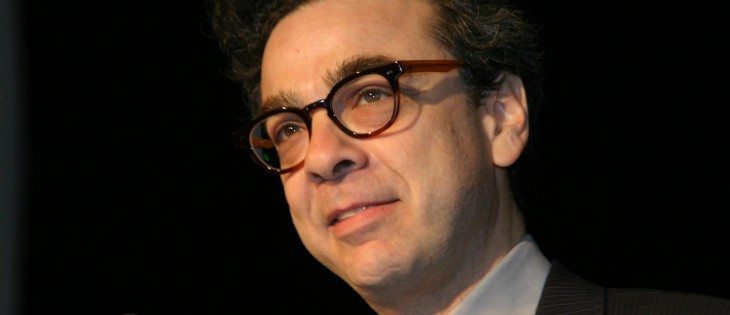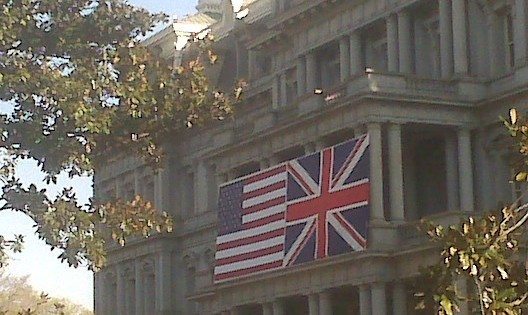I’LL BE UPDATING THIS BLOG POST EVERY HOUR OR TWO THROUGHOUT THURSDAY AND FRIDAY DURING THE CANOLA COUNCIL OF CANADA’S ANNUAL CONVENTION IN WASHINGTON D.C.
I’LL PUT NEW ENTRIES ON TOP, SO YOU DON”T HAVE TO WADE THROUGH ALL THE STUFF BELOW AGAIN AND AGAIN
DAVID FRUM
Fascinating analysis of American politics. Will update later. Gotta get to the airport.
SENATOR BUTH, AMBASSADOR DOER
Read Also

Farmer ownership cannot be seen as a guarantee for success
It’s a powerful movement when people band together to form co-ops and credit unions, but member ownership is no guarantee of success.
The canola industry certainly seems well connected to the political world these days. At lunch new Senator JoAnne Buth spoke. Right now Canadian Ambassador to the U.S. Gary Doer is speaking. Actually, Senator Buth just asked Ambassador Doer a question.
GEORGE DA PONT OF CFIA
Da Pont highlighted that the Canadian regulatory system recognizes that “we are a trading nation” and that unlike in some countries, Canada believes in a science-based system.
This pretty much echoes the view of the canola industry, so should be music to people’s ears here.
Potential of approval and inspection harmonization: “We don’t want to spend a lot of resources and time inspecting stuff we know the FDA has already inspected.”
RANDALL GORDON – U.S. National Grain and Feed Association
Gordon has just described a sweeping new proposed food safety act and how it could hit agriculture and food industries.
Some of the concerns his org has are: risk of trade retaliation if U.S. forces inspections on foreign companies overseas, the imposition of lots of extra inspections. unforseen consequences. The U.S. industry hopes the act doesn’t complicate trade or cause trade disruptions.
JIM EVERSON – CANOLA MARKET ACCESS
Jim Everson of the CCC told the convention that China is slowly opening to more Canadian canola coming into the market and the blackleg issue is slowly being worked through. There are still lingering problems with canola facing more tariffs than soybeans, which creates a competitive disadvantage, but the Canadian and Chinese governments are planning to work through a number of trade issues in many industries, and the canola tariff issue will be addressed there.
SEAN WISE – DRAGON’S DENIZEN
I asked Dragon’s Den advisor Sean Wise what the biggest danger a rapidly growing and booming industry like canola tends to face, and what could be its strategic Achilles’ Heel. The answer: complacency. Wise told me that industries or businesses that grow rapidly can tend to assume growth will just keep coming, and not focus on competitors or demand slackening off. (He didn’t suggest the canola industry is complacent.)
The best thing a business or industry can do to keep the growth trend going: invest, innovate, develop and improve the product, according to Wise.
To me, that seems to be exactly what the canola industry is doing, so at least, following the rules according to Wise, canola still seems to be going in the right direction.
2015 Goals
How did 2011 turn out? “The growth is impressive,” said Pat Van Osch, chair of the Canola Council of Canada. Acreage, yield, production, returns to farmers – all continued the long term trend of ever-increasing gains. 2015 goals are all achieveable. Likely to arrive well before 2015 with good growing conditions.
In 2011, even with dryness and flooding, farmers produced 14.2 million tonnes of canola. The 2015 target is only 15 million tonnes.
I (Ed White saying this) remember back in, I think, 2003 when the 7 by ’07 target (seven million tonnes by 2007) was set, and it seemed lofty, and to some people unrealistic. I remember doing interviews with CCC people who sounded optimistic, but not entirely convinced, that 7 by ’07 was possible. Seems like a different world. Now 20 by 2020 seems an achievable target.
Hmmmmm. The industry must have an Achilles’ heel out there. No trend continues forever. But it could be a long time before this growth trend ends.
CANOLA BREEDING INNOVATION PANEL
I’m not the dumbest guy I know, but I sure feel dumb listening to the researchers from Dow AgroSciences, Bayer CropScience and Monsanto discuss the radical changes in plant breeding methods. Since I don’t really understand any of the methods, I can’t explain them now.
But what I’m smart enough to get is that it is getting much faster and cheaper to do a lot of research into developing canola crops that contain valuable attributes. With healthy soybean oils moving into canola’s comfy spot, canola needs new elements in order to retain a market edge.
JOSEPH GLAUBER – USDA CHIEF ECONOMIST
Chinese demand, again, is a major theme. Joseph Glauber has been noting how U.S ag exports have surged up while the $US has been declining and Chinese demand has been growing.
“Staggering” corn production and consumption. Ditto with wheat.
“We don’t see wheat stocks getting back to the levels we saw in the late 1990s.”
Corn stocks-to-use is historically low. But Glauder said normal weather and growing conditions will lead to a rebuilding of corn and wheat stocks in the U.S. this year, because last year’s crop was hit by drought.
USDA is predicting a 50 percent drop in U.S. soybean stocks in 2012-13. But U.S. soy oil stocks will fall much less.
The tailing down of ethanol production reduces demand for corn. The stagnant size of the U.S. livestock industry is reducing demand for soybeans.
Overall, “we are expecting prices to fall” for crops in 2012, assuming normal weather.
ECONOMIST RANGA CHAND
Booming growth in the BRICs and other developing economies.
Tiny growth in places like Canada and U.S.
Decline in Japan, Italy, UK.
A coming debtplosion when interest rates inevitably go up.
A rather frightening outlook by economist Ranga Chand.
For me, being a committed deflationist since 2007, there wasn’t much to disagree with.
But what does it mean for commodity demand?
FREAKONOMIST STEPHEN DUBNER
Dubner – the rarest of all things: a superstar economic journalist – is talking about how to change human behavior. What works and what doesn’t.
“People will say one thing and do another.”
“Human behavior is harder to change than we think.”
“Human beings are horrible at predicting the future.”
Brilliant stuff on the history of the horse manure commodity market in old New York. I’m not kidding. Lots of stuff on horse manure economics.
WHY WASHINGTON?
Pat Van Osch of Richardson notes that the CCC convention in Washington DC makes sense because it is the capital of “our largest trading partner.”
FREAKONOMICS MAN
Stephen Dubner, the author of Freakonomics (a brilliant book/s, by the way), will be speaking soon. I wonder if he’ll address the question of why everyone in the U.S. – outside this industry – thinks olive oil is so much healthier than canola oil. (I’m joking. I doubt he thinks much about these vegetable oil issues that obsess us in the farming world.) I asked my waiter last night what oil the restaurant uses: “Olive oil. Only olive oil,” he said. My food didn’t taste olive oily, so I don’t think he was right, but I suspect he knew that consumers think “Healthy” when they hear olive oil. Most probably still don’t know much about canola. There’s the problem. There’s the opportunity, methinks.
Washington seems sane
I arrived in Washington, D.C., yesterday afternoon and promptly discovered that I had unexpectedly walked right into summer. It was 76 fahrenheit outside. Humid. I had only sweaters. So I had to sweat my way from the hotel over into Georgetown to buy some shirts that wouldn’t roast me alive. Wonderful.
At supper time, I then – equipped in summer-appropriate clothes, decided to wander about Imperial Rome. No end of neoclassicism, gothic and romanesque architecture. I wandered past both the World Bank and the International Monetary Fund, but they were closing for the night, so I didn’t go in to offer any advice on how to run the planet.
Then to my shock, I found that Washington seemed to have suddenly become sane! It was as if I had woken from a fevered nightmare to discover a happier reality. Everywhere along Pennsylvania Avenue – on every lampstand and on many buildings – the Union Jack was flying, right beside the Stars and Stripes. And on the executive offices that are part of the White House complex the pairing of flags was bold:
Whew! What a relief. That 1776 revolution and persecution of our Loyalist ancestors was just a bad dream! The American colonies are still united with the Crown. Golly. Is there even a Canada, I wondered?
But then the more mundane explanation exposed itself to me: all the Union Jacks were flying everywhere because UK Prime Minister David Cameron was coming to the White House for a gala dinner. Pennsylvania Avenue was closed to motorized traffic, but I and a gaggle of clued-out tourists were able to look at the White House itself, and understand why so many people with tuxedos were heading in that direction. I left my tuxedo in Winnipeg, so I didn’t try to crash the party.
So I walked on, and found more elements of the Canada-U.S. connection. On the old treasury building, I found this plaque, noting Canada and the U.S.’s long, peaceful relationship.
How cheery and pleasant! And I expect the long, peaceful and harmonious relationship – other than those 1776 and 1812 bits – will be a big theme here at the Canola Council convention. The U.S. market is a huge part of canola and canola product demand. Massive resources for canola development come out of the U.S. It is a virtuous industrial relationship. Friday Gary Doer, Canada’s ambassador to this former member of the Empire, will speak to the convention.
I walked on a bit more, and ran into this fellow:
It seemed best to walk on and not rile him up with any humourous remarks about big ears.
A few blocks on a rather rancid smell crawled up my nostrils, and I thought it might be the cherry trees blooming. Instead, it was the local Occupy movement, which is camped out in the middle of an avenue, on the side median.
Then I came back to the hotel, and thought about vegetable oil.
























